
How to Use Esp32 38pin: Examples, Pinouts, and Specs
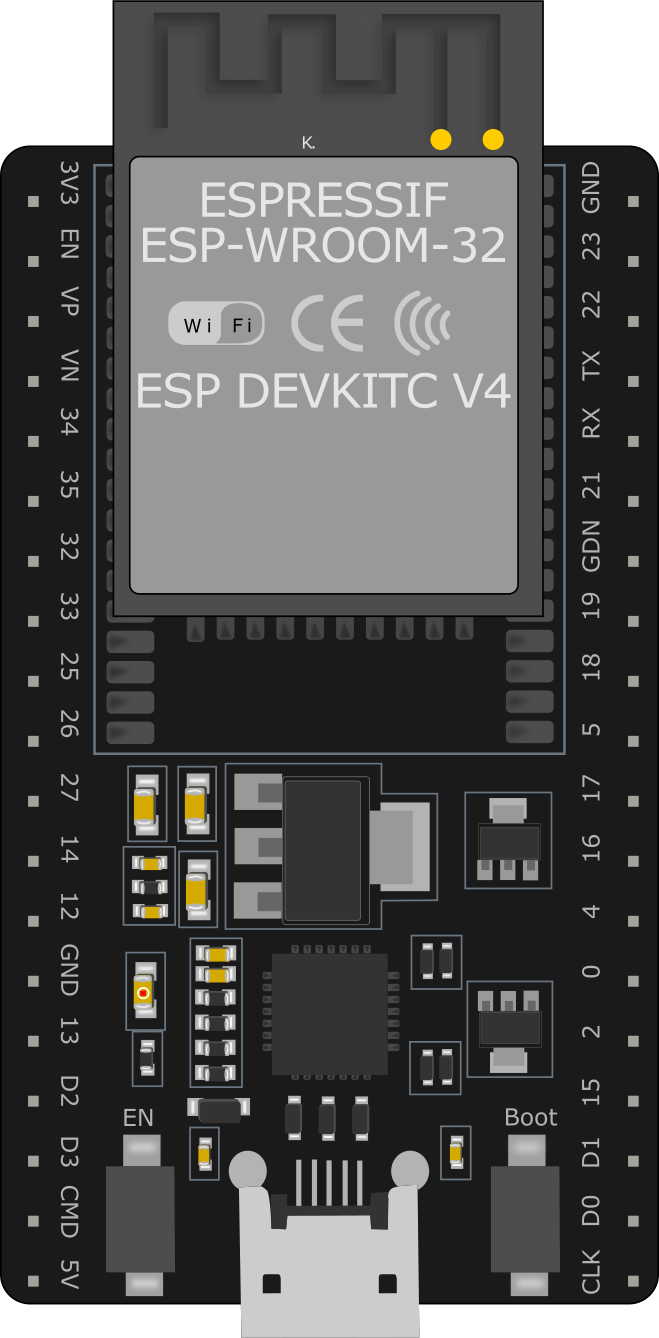
 Design with Esp32 38pin in Cirkit Designer
Design with Esp32 38pin in Cirkit DesignerIntroduction
The ESP32 38-pin is a powerful microcontroller designed for IoT (Internet of Things) applications and embedded systems. It features integrated Wi-Fi and Bluetooth capabilities, making it ideal for wireless communication and smart device projects. With 38 pins, the ESP32 offers a wide range of input/output (I/O) options, including digital, analog, PWM, and communication interfaces such as UART, SPI, and I2C. Its versatility and high performance make it a popular choice for developers and hobbyists alike.
Explore Projects Built with Esp32 38pin
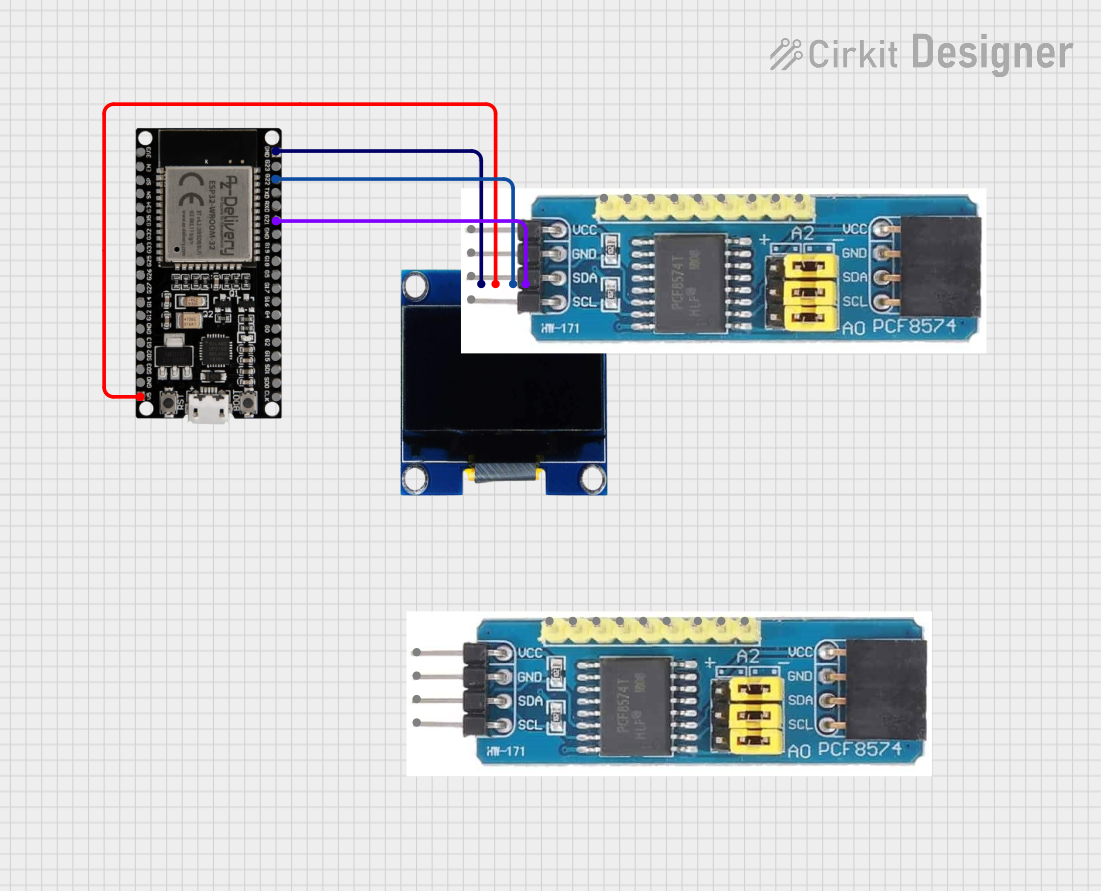
 Open Project in Cirkit Designer
Open Project in Cirkit Designer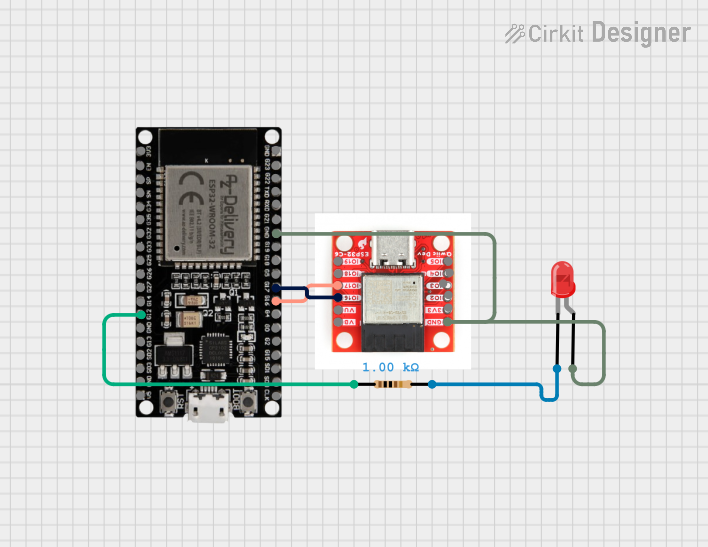
 Open Project in Cirkit Designer
Open Project in Cirkit Designer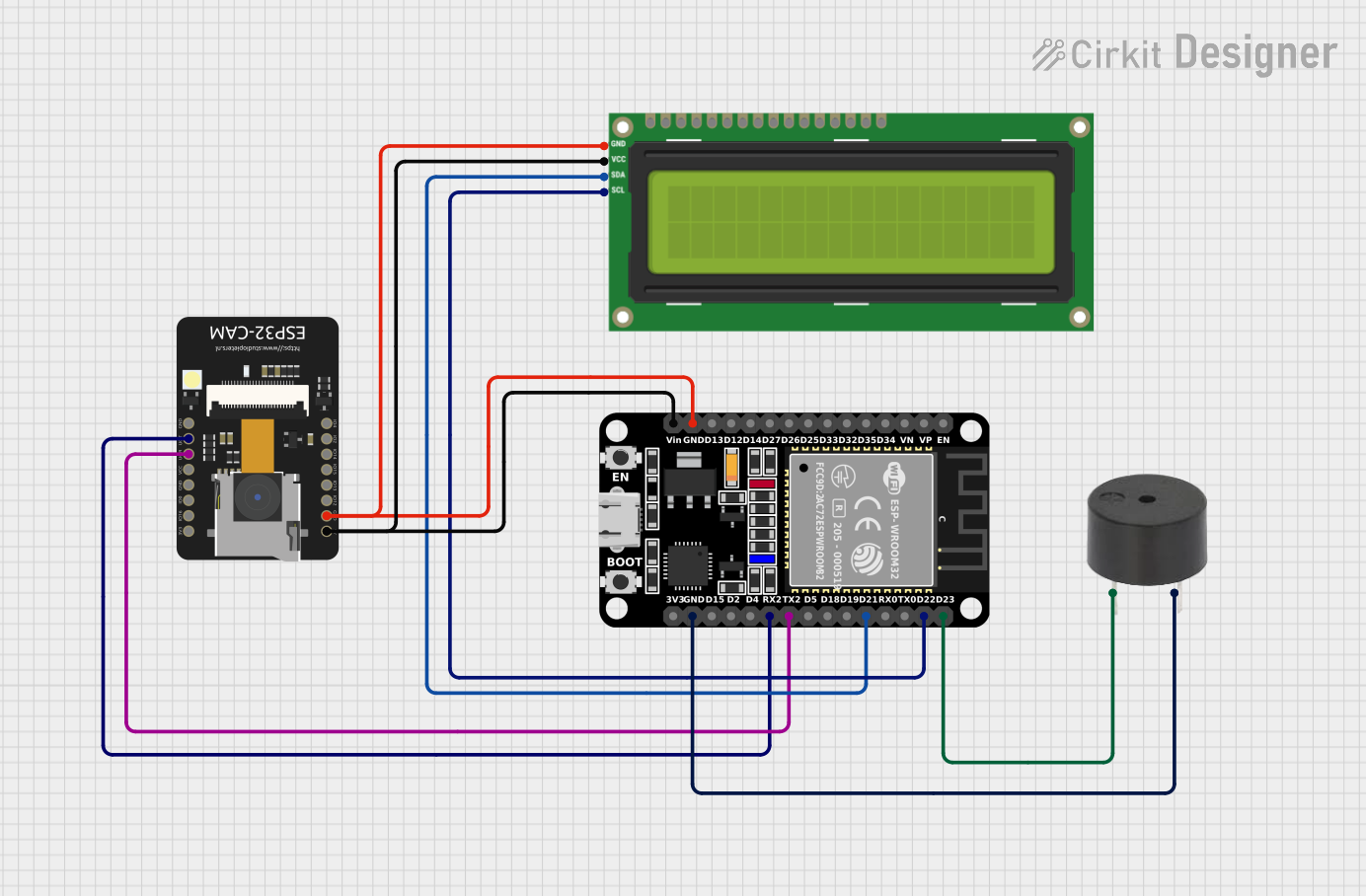
 Open Project in Cirkit Designer
Open Project in Cirkit Designer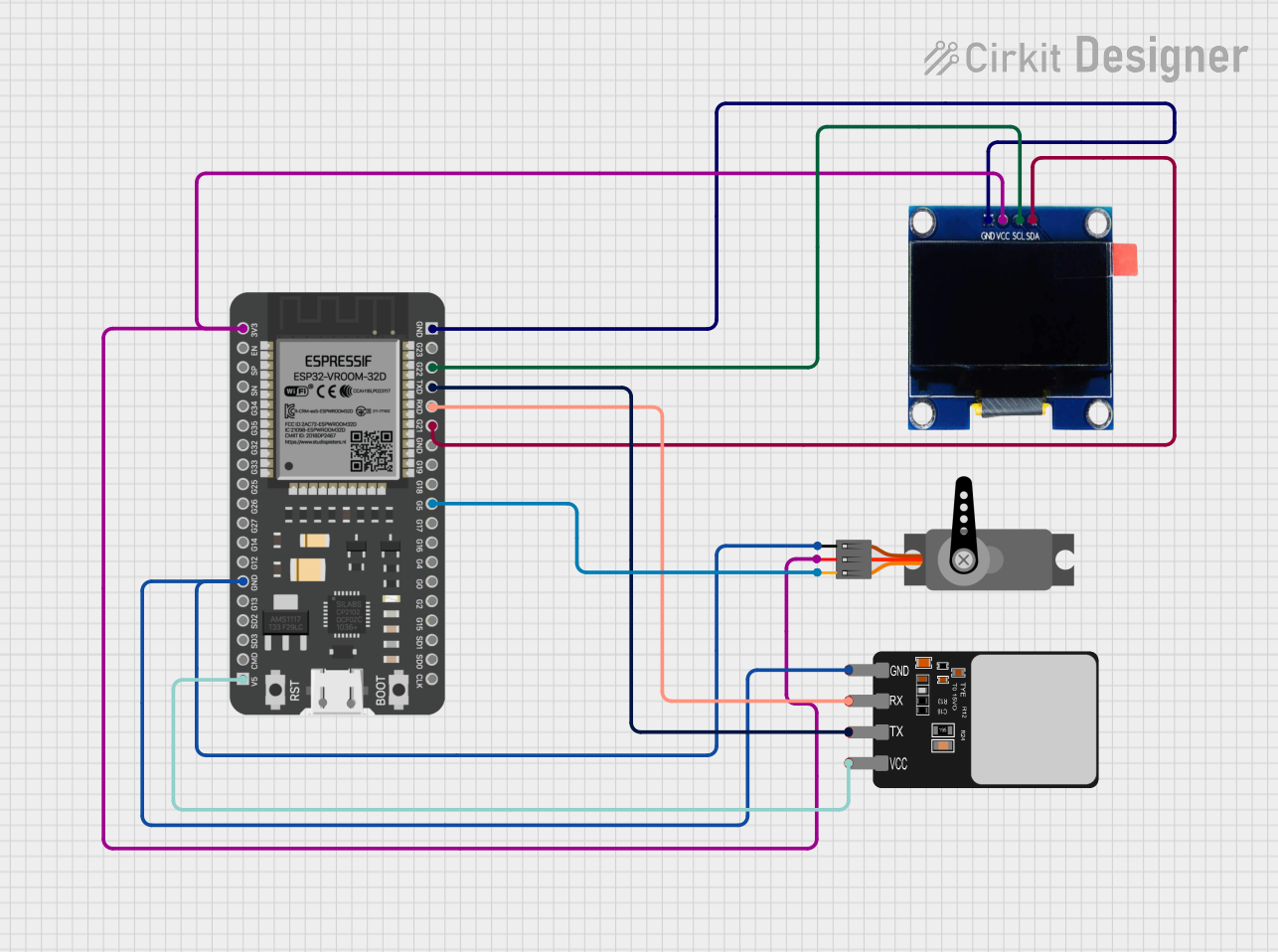
 Open Project in Cirkit Designer
Open Project in Cirkit DesignerExplore Projects Built with Esp32 38pin

 Open Project in Cirkit Designer
Open Project in Cirkit Designer
 Open Project in Cirkit Designer
Open Project in Cirkit Designer
 Open Project in Cirkit Designer
Open Project in Cirkit Designer
 Open Project in Cirkit Designer
Open Project in Cirkit DesignerCommon Applications and Use Cases
- Smart home automation systems
- IoT devices and sensors
- Wireless data logging and monitoring
- Robotics and motor control
- Wearable devices
- Industrial automation and control systems
Technical Specifications
The ESP32 38-pin microcontroller is built for high performance and flexibility. Below are its key technical details:
Key Technical Details
- Processor: Dual-core Xtensa® 32-bit LX6 CPU
- Clock Speed: Up to 240 MHz
- Flash Memory: 4 MB (varies by model)
- SRAM: 520 KB
- Wi-Fi: 802.11 b/g/n
- Bluetooth: v4.2 BR/EDR and BLE
- Operating Voltage: 3.3V
- Input Voltage Range: 5V (via USB) or 3.3V (via VIN pin)
- GPIO Pins: 34 (configurable as digital I/O, PWM, ADC, etc.)
- ADC Channels: 18 (12-bit resolution)
- DAC Channels: 2 (8-bit resolution)
- Communication Protocols: UART, SPI, I2C, CAN, I2S
- Power Consumption: Ultra-low power in deep sleep mode (~10 µA)
Pin Configuration and Descriptions
The ESP32 38-pin microcontroller has a total of 38 pins, each with specific functions. Below is a table summarizing the pin configuration:
| Pin Number | Pin Name | Function |
|---|---|---|
| 1 | EN | Enable pin (active high, used to reset the chip) |
| 2 | IO36 (VP) | ADC1 Channel 0, GPIO36, input-only pin |
| 3 | IO39 (VN) | ADC1 Channel 3, GPIO39, input-only pin |
| 4 | IO34 | ADC1 Channel 6, GPIO34, input-only pin |
| 5 | IO35 | ADC1 Channel 7, GPIO35, input-only pin |
| 6 | IO32 | ADC1 Channel 4, GPIO32, touch sensor T9 |
| 7 | IO33 | ADC1 Channel 5, GPIO33, touch sensor T8 |
| 8 | IO25 | DAC1, GPIO25, ADC2 Channel 8 |
| 9 | IO26 | DAC2, GPIO26, ADC2 Channel 9 |
| 10 | IO27 | GPIO27, ADC2 Channel 7, touch sensor T7 |
| 11 | IO14 | GPIO14, ADC2 Channel 6, touch sensor T6 |
| 12 | IO12 | GPIO12, ADC2 Channel 5, touch sensor T5 |
| 13 | IO13 | GPIO13, ADC2 Channel 4, touch sensor T4 |
| 14 | IO15 | GPIO15, ADC2 Channel 3, touch sensor T3 |
| 15 | IO2 | GPIO2, ADC2 Channel 2, touch sensor T2 |
| 16 | IO4 | GPIO4, ADC2 Channel 0, touch sensor T0 |
| 17 | IO16 | GPIO16, UART2_RX |
| 18 | IO17 | GPIO17, UART2_TX |
| 19 | IO5 | GPIO5, SPI_SS |
| 20 | IO18 | GPIO18, SPI_CLK |
| 21 | IO19 | GPIO19, SPI_MISO |
| 22 | IO21 | GPIO21, I2C SDA |
| 23 | IO22 | GPIO22, I2C SCL |
| 24 | IO23 | GPIO23, SPI_MOSI |
| 25 | GND | Ground |
| 26 | 3V3 | 3.3V power output |
| 27 | VIN | Input voltage (5V) |
| 28-38 | Other GPIOs | Configurable as digital I/O, PWM, or communication pins |
Usage Instructions
How to Use the ESP32 38-Pin in a Circuit
Powering the ESP32:
- Use a USB cable to power the ESP32 via the micro-USB port (5V input).
- Alternatively, supply 3.3V directly to the VIN pin. Ensure the power source is stable.
Connecting to Peripherals:
- Use GPIO pins for digital input/output.
- Connect sensors to ADC pins for analog input.
- Use UART, SPI, or I2C pins for communication with other devices.
Programming the ESP32:
- Install the ESP32 board package in the Arduino IDE.
- Connect the ESP32 to your computer via USB.
- Select the correct board and port in the Arduino IDE.
- Write and upload your code.
Important Considerations and Best Practices
- Always use a level shifter when interfacing 5V devices with the ESP32 (3.3V logic).
- Avoid using ADC2 pins when Wi-Fi is active, as they share resources.
- Use pull-up or pull-down resistors for input pins to prevent floating states.
- Ensure proper grounding to avoid noise and instability in analog readings.
Example Code for Arduino IDE
The following example demonstrates how to blink an LED connected to GPIO2:
// Define the GPIO pin for the LED
const int ledPin = 2;
void setup() {
// Set the LED pin as an output
pinMode(ledPin, OUTPUT);
}
void loop() {
// Turn the LED on
digitalWrite(ledPin, HIGH);
delay(1000); // Wait for 1 second
// Turn the LED off
digitalWrite(ledPin, LOW);
delay(1000); // Wait for 1 second
}
Troubleshooting and FAQs
Common Issues and Solutions
ESP32 Not Detected by Computer:
- Ensure the USB cable is functional and supports data transfer.
- Install the correct USB-to-serial driver for your operating system.
Upload Fails in Arduino IDE:
- Check that the correct board and port are selected.
- Press and hold the "BOOT" button on the ESP32 while uploading the code.
Wi-Fi Connection Issues:
- Verify the SSID and password in your code.
- Ensure the router is within range and supports 2.4 GHz Wi-Fi.
Unstable Analog Readings:
- Use proper grounding and decoupling capacitors.
- Avoid using ADC2 pins when Wi-Fi is active.
FAQs
Q: Can the ESP32 operate on battery power?
A: Yes, the ESP32 can be powered by a LiPo battery connected to the VIN pin.Q: How do I reset the ESP32?
A: Press the "EN" button on the board to reset the microcontroller.Q: Can I use the ESP32 with 5V sensors?
A: Yes, but you must use a level shifter to convert 5V signals to 3.3V.
This documentation provides a comprehensive guide to using the ESP32 38-pin microcontroller effectively.